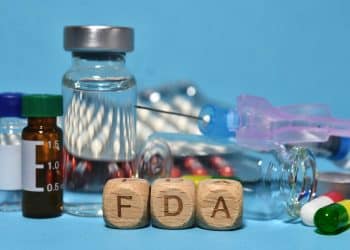The effects of cancer in modern times are unsettling and tragic. In 2018, the National Cancer Institute (NCI) estimated that 1,735,350 new cases would be diagnosed, and that 609,640 people would die from the disease. Despite multiple organizations perpetually “raising money” to generate “awareness” about cancer, nothing really seems to be slowing the disease down, as NCI reports that the number of new, annual cases of cancer is projected to rise to approximately 23,600,000 by 2030.
That’s not at all to say that there are not more powerful innovations being implemented by clinicians and scientific researchers across the globe. It’s just that walks for a cure and the revenue generated from them are often enshrouded in mystery regarding where the funds raised actually go. Or, in the case of breast cancer, you’ll see what’s been termed “pink-washing,” where companies brand everything under the sun with pink labels, including products known to cause cancer, in a phony, corporate attempt to stand for something besides the dollar. And in another case, the star of The Apprentice may have siphoned off $100,000 from the Eric Trump Foundation, an entity that is supposed to raise money for children with cancer, and added it to the coffers of the Trump Organization.
The application and efficacy of delta-9-tetrahydrocannabinol (THC) for sufferers of cancer are not new. [1-3] Even a government website indicates this. Not bad for a molecule labeled as a Schedule I drug having no medicinal value. There was even a clinical trial that evaluated the power of THC for treating glioblastomas, which are malignant tumors affecting the brain and spine. [4] The power of THC to inhibit cancer cell proliferation and encourage apoptosis (cell death) has been linked to the endocannabinoid system (ECS), since application of cannabinoid receptor antagonists prevented cell death. [5] Despite its importance on these cancer applications, medical doctors have reported that the ECS just hasn’t been taught in medical school.
In 2010, Dr. Jahan Marcu and co-authors investigated whether other cannabinoids native to Cannabis sativa might help or hinder the efficacy of THC. [6] Specifically, the study sought to explain “how cannabinoids, acting through distinct pathways, could converge onto a shared pathway resulting in a modulation of activity unique to the combination.” Additionally, the authors hypothesized that treatments using solely THC could be augmented “using a strategy of combination treatments.”
The authors evaluated THC and cannabidiol (CBD) separately, and noted that “compared to Δ9-THC, CBD was significantly more potent than Δ9-THC at inhibiting cancer cell growth.” They also measured a potentiating synergy between THC and CBD, as the addition of CBD enables THC to better inhibit cancer cell proliferation and cause cell death via oxidative stress. Interestingly, though, increases in THC concentration when CBD was also present didn’t result in the enhanced efficacy, which showed that the effects weren’t from amplified THC potency.
Increased apoptosis from THC or THC and CBD was dependent on cannabinoid receptor 2 (CB2) activation, but not for CBD alone. [6] CB2 receptors are predominantly expressed in our immune systems. [7] The authors also determined that “the induction of apoptosis in the presence of the combination treatment was significantly greater than that observed with Δ9-THC alone.” [6]
The authors concluded that “Cannabidiol significantly improved the inhibitory effects of Δ9-tetrahydrocannabinol on glioblastoma cell proliferation and survival, but not on cell invasiveness.” They additionally noted that “It is also possible that other constituents of Cannabis sativa which are not structurally related to cannabinoids could improve antitumor activity when combined,” which wonderfully foreshadows so many conversations about the entourage effect held today.
References
- Sallan S., et al. “Antiemetics in Patients Receiving Chemotherapy for Cancer: A Randomized Comparison of Delta-9-Tetrahydrocannabinol and Prochlorperazine.” N Engl J Med, vol. 302, no. 3, 1980, pp. 135-8. [journal impact factor = 70.670; cited by 194]
- Doblin R. and Kleiman M. “Marijuana as Antiemetic Medicine: A Survey of Oncologists’ Experiences and Attitudes.” J Clin Oncol, vol. 9, no. 7, 1991, pp. 1314-9. [journal impact factor = 26.303; cited by 93]
- Bifulco M. and Di Marzo V. “Targeting the Endocannabinoid System in Cancer Therapy: A Call for Further Research.” Nat Med, vol. 8, 2002, pp. 547–550. [journal impact factor = 32.621; cited by 179]
- Guzman M. et al. “A Pilot Clinical Study of Delta9-Tetrahydrocannabinol in Patients with Recurrent Glioblastoma Multiforme.” Br J Cancer, vol. 95, 2006, pp. 197–203. [journal impact factor = 5.922; cited by 176]
- Carracedo A. et al. “The Stress-Regulated Protein p8 Mediates Cannabinoid-induced Apoptosis of Tumor Cells.” Cancer Cell, vol. 9, 2006, pp. 301–312. [journal impact factor = 22.844; cited by 232]
- Marcu, J. et al. “Cannabidiol Enhances the Inhibitory Effects of Δ9-Tetrahydrocannabinol on Human Glioblastoma Cell Proliferation and Survival.” Mol Cancer Ther, vol. 9, no. 1, 2010, pp. 180–189. [journal impact factor = 4.856; cited by 70]
- Turcotte, C. et al. “The CB2 Receptor and Its Role as a Regulator of Inflammation.” Cellular and Molecular Life Sciences, vol. 73, 2016, p. 4449-4470. [journal impact factor = 7.014; cited by 66]
Image Credit: OhioCannabis.com












